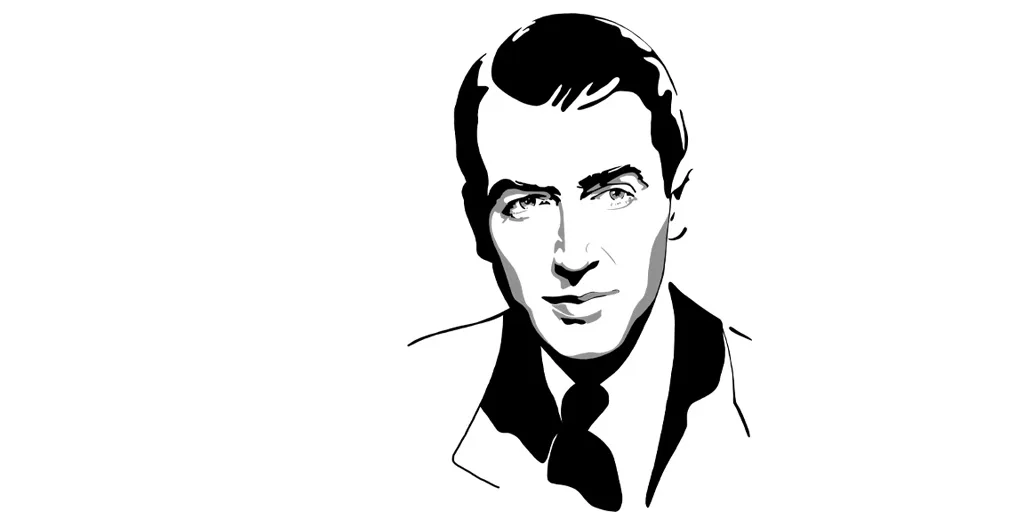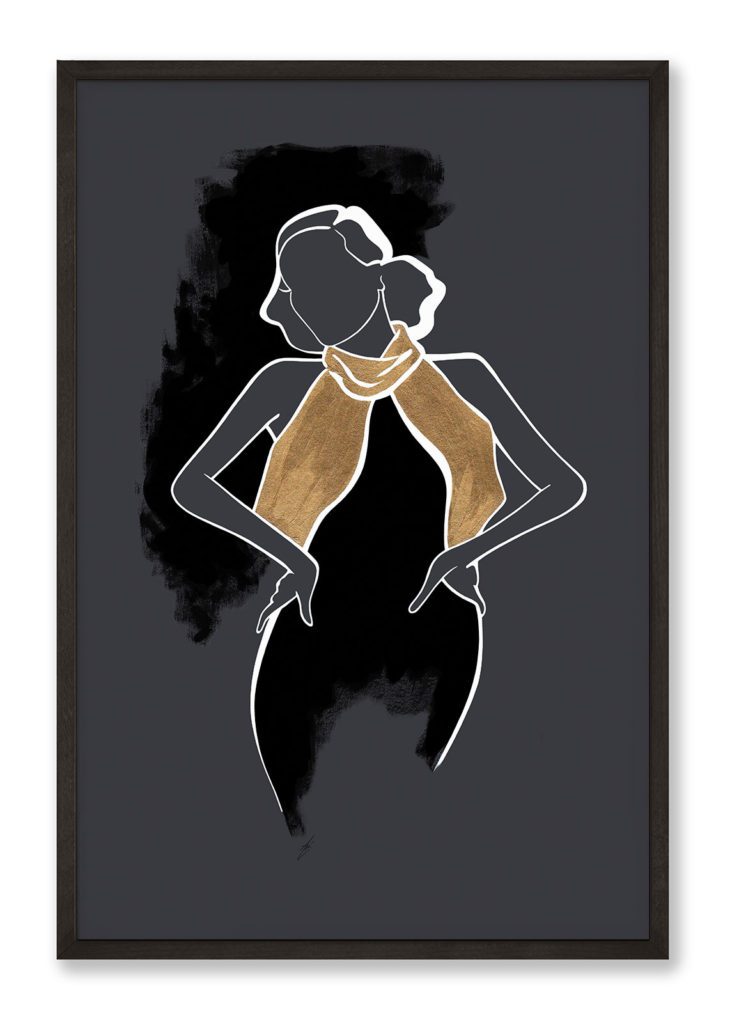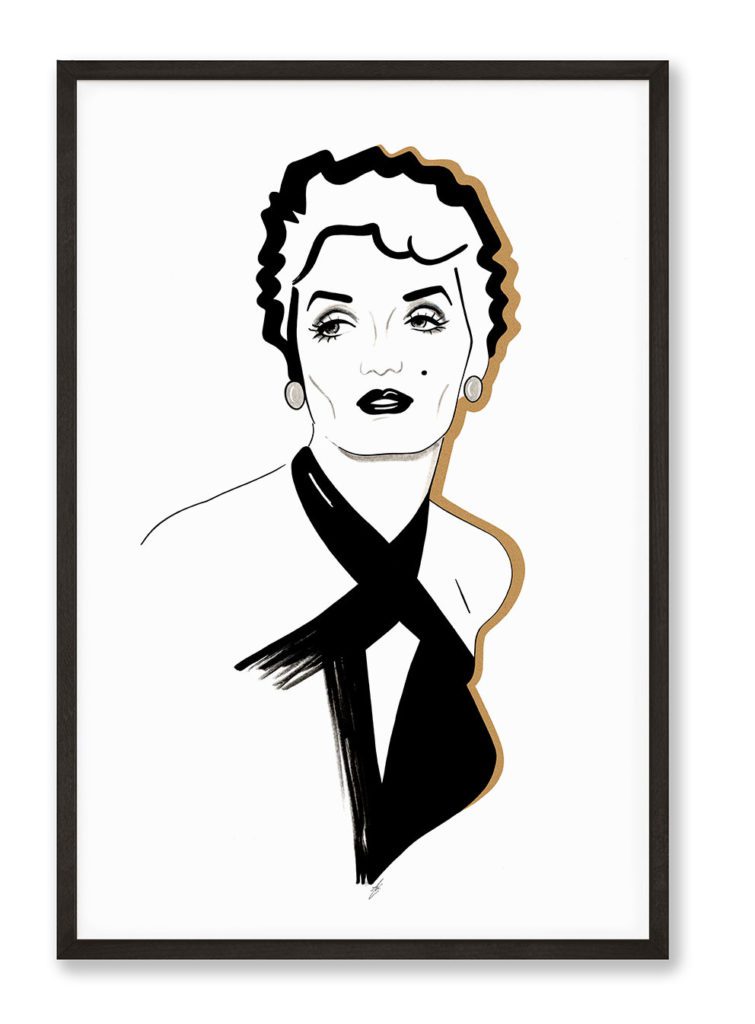James Stewart
Hollywood Star & Air Force General




Hi, I'm Kat!
What I am most passionate about is to inspire you to see that your life is your own and biggest masterpiece.
James Stewart was the original „everyday man“ of Hollywood. Playing himself and his screen persona above everything else. His famous drawl made him known on the screen as well as on the radio. Besides that he was the highest ranking actor in American military history.
LISTEN TO THE PODCAST
SUBSCRIBE TO THE PODCAST
Beginnings
James Maitland Stewart was born on May 20, 1908 in Indiana, Pennsylvania. He was the first-born son with two younger sisters. The family, that had both Scottish and Scotch-Irish ancestry, ran the J.M Stewart and Company Hardware Store in the city and had done so for many generations. Hopes were that newborn James would later take over the reigns of the company as had done his elders before. James or „Jimmy“ was rather shy and kept to himself, dreaming of going into aviation at one point in his life. During his pastime, he would assemble model airplanes and do mechanical drawings.
When it comes to school, James Stewart was not the best of students – it was not due to his intelligence, but because he was rather a creative dreamer and zoned out and daydream during school. His low grades grades reflected this accordingly. At prep school, he was more interested in joining the extracurricular activities, like the track team, the glee club (which for those unfamiliar to this concept was a musical or choir group), the literary society, the football team and the drama society, which resulted in his stage debut in the play „The Wolves“ in 1928, when he was aged 20.
He then attended Princeton and graduated in 1932 with a major in architecture. He actually was awarded a scholarship for graduate studies in architecture for his thesis on an airport terminal design. So this was quite a different route his life could have taken. But, he was more attracted to continuing acting and joined University Players, which was an intercollegiate summer stock company.
Theatre, Broadway and first roles
In 1932, while being with University Players the summer after graduation, Stewart met and formed a close friendship with Henry Fonda and his then wife Margaret Sullavan. Actually, Stewart, newly-divorced Fonda and fellow actor friends Joshua Logan and Myron McCormick moved together to New York after the summer. This is when Stewart debuted on Broadway together with friend McCormick. He acted in several bit parts with his appearances lauded by the critics, but without any longer engagement or success in sight. Stewart actually was thinking about turning his back on acting and taking his architecture studies back up. Fortunately, this did not happen and Stewart found a new belief in his acting abilities when he was offered the lead role in Yellow Jack. And yes, the play was applauded by the critics – yet, the public dismissed it and it folded after only 12 weeks.
In 1934, Stewart made his movie debut as an unmilled extra in a Sheep Howard comedy short and continued acting on stage – sometimes the plays were successful, sometimes not.
Hollywood
Nevertheless, in 1935, James Stewart signed a standard seven-year contract with MGM and made his Hollywood debut apposite Spencer Tracy in „The Murder Man“ . His agent was none other than Leland Hayward, who also had attended Princeton. He handled also Fred Astaire, Ernest Hemingway, Boris Karloff, Judy Garland, Ginger Rogers, Henry Fonda and William Wyler. As MGM did not see any leading man qualities in James Stewart, Hayward’s strategy for him was to loan him to other studios instead. The first of such loans was to Universal Studios, when his friend, romantic love interest and ex-wife of Henry Fonda, Margaret Sullivan campaigned heavily for him to be cast opposite her in „Next time we love“. She was also the main influence behind his acting, coaching him extensively, rehearsing the role with him – and creating an on-screen persona that would incorporate his lankiness, his awkwardness and his boyishness. And, indeed, it payed off: The movie was a success and Stewart got back on the radar of studio bosses, critics and the public.
The thing though, his next movies were a mixture of good and bad. They, meaning Hayward, Stewart and MGM hadn’t found his persona yet, his kind of role. So, in 1936, Stewart starred in eight movies altogether – the first being „Next time we love“and the last one „After the thin man“, for the latter he received great praise, quoting Kate Cameron o the New York Daily News: „he demonstrates most effectively that he is something more than a musical comedy juvenile.“ Yet, in-between those two successes were some failures, like „Speed“ or „Born to dance“, which proved that he was definitely not born to dance or sing. IN 1937, Stewart continued his streak of failures with „Seventh Heaven“ and „The Last Gangster“. His role in „Navy Blue and Gold“ though got him the best reviews of his career thus far – and entertainment media already picked him as a possibility for leading roles and stardom.
Way to Stardom
Although, everybody in Hollywood kind of knew that Stewart could make it, his studio MGM was hesitant to cast him in leading roles and continued to loan him to other studios. Probably to try him out whilst making a sure profit. The movies Stewart made in this time between 1938 and 1940 were a wild mixture of critical and commercial failures and successes, sometimes not going hand in hand. Some bombed at the box office although critics loved them, some were wildly successful with audiences, but critics hated them. Sometimes they all disliked the movie, sometimes they all like the movie. Examples of the winning successes were the two Frank Capra collaborations „You can’T take it with you“ and „MR. Smith goes to Washington“, both opposite Jean Arthur and „Destry Rides Again“ opposite Marlene Dietrich. And of course, in 1940, „The Philadelphia Story“ opposite Katherine Hepburn and Cary Grant was one of Stewart’s major box-office successes that is known and loved until today. His role as an intrusive, fast-talking reporter won James Stewart an Academy Award as Best Actor. Side Note: Stewart’s role in the movie was a supporting role, not a lead role – and Stewart’s suspicion was that the academy had actually granted him the award for his role in „Mr. Smith goes to Washington“ the year before. And, fun fact: the award went straight to Stewart’s dad who displayed it at his hardware store together with all other family accolades.
His last movie before entering WW II was „Ziegfeld Girl“ opposite Judy Garland, Hedy Lamar and Lana Turner. Although a critical failure, it was one of the best-performing box office successes that year.
Hollywood after WWII
After WWII, when Stewart returned to Hollywood in 1944, it was again Frank Capra who reached out and cast Stewart in „It’s a Wonderful Life“. This movie was so challenging for Stewart that he – again – considered retiring altogether from acting. The movie received five Academy award nominations, yet was only a moderate box office success. Nevertheless, it is now regarded as an Christmas classic and has been named by the American Film Institute to be one of the 100 best American movies ever made. And, the movie helped define James Stewart’s on-screen person. Actually, it was Stewart’s personal favorite of all the movies that he’s made during his career.
What followed in the coming years was what actually had been going on for all of his career so far: Successes and failures just followed each other, there was no straight line up or down. While he celebrated great succesess with acclaimed film noir „Call Northside 777“, romantic comedy“ You gotta stay happy“ and „The Stratton Story“, the musical comedy „On Our Merry Way“ was as big a failure as was „Malaya“ and „Magic Town“.
Other notable movies in the 1950s were „The Jackpot“, „Harvey“, an audience-favorite about an eccentric whose best friend is a man-sized rabbit – a role that Stewart had performed on stage some years before already. Just like „It’s a Wonderful Life“, „Harvey“ became largely popular only after several decades and formed an integral part of Stewart’s image. A movie that I personally liked very much when I was younger was 1958’s „Bell, Book and Candle“ with James Stewart leading opposite Kim Novak and Jack Lemmon in a supporting role. But, as Stewart was already 50 years old at that time, he was miscast as Novak’s love interest, as she was only 25 years old. Both his performance as well as the movie as a whole received poor reviews.
„Anatomy of a Murder“ was another successful movie of James Stewart and earned him several accolades – ranging from an Academy Award nomination, a BAFTA win, a Volpi Cup, a New York Film Critics Circle Award and a Producers Guild of America Award.
Alfred Hitchcock
James Stewart also became notable for collaborating with Alfred Hitchcock on several movies.
First, there was „Rope“, which actually was not a good movie. James Stewart’s performance was not right. He was not right for the role – and it translated to the screen. His second collarboation though was a smash hit. It was „Rear Window“ with Grace Kelly – and remember: it was based on the story of Robert Capa and Ingrid Bergman.
1956’s „The Man Who Knew Too Much“ opposite Doris Day followed and was received well both at the box office and by critics.
„Vertigo“ in 1958 was the final movie Stewart and Hitchcock collaborated on. The controversial movie was neither a commercial nor a critical success, but developed into the greatest film ever made, as the Sight & Sound critics’ poll in 2012 shows. As Stewart was already 50 years of age then and started to have silver hair, Hitchcock preferred a tanned, black-haired Cary Grant over him for „North by Northwest“.
Western
In the 1950s, Stewart tried to reinvent himself in the Western genre – and his agent Lew Wasserman reinvented the Hollywood game. He did so by premiering the innovative deal with Universal that Stewart would not receive a fee, but instead a percentage of the profits. A model which would turn tables in Hollywood in the years after and contribute to the decay of the studio system. Also, Stewart would have a say in casting and hiring decisions.
This is the backdrop to the movie „Winchester´73“, which was filmed in 1950. The movie became a huge success as did the following Western „Broken Arrow“. He collaborated with Mann on five more movies, including „Bend of the River“, „The Naked Spur“ and „The Far Country“. All of these collaborations were successful – they laid the groundwork for more realistic and way grittier Westerns than those filmed before. They also helped defined a different screen persona for James Stewart, tough and vengeful.
After collaborating with Mann on numerous Westerns, he turned to John Ford in the 1960s to collaborate on several successful movies, one of them was „The Man Who Shot Liberty Valance“ in 1962, when went on to become a critical favorite over time – it was shot in black and white film noir style. Also in the 1960s, he teamed up with Henry Fonda and John Wayne in „How the West was Won“, which went on to win three Academy Awards and was a huge box office success. Other Westerns like „Cheyenne Autumn“, „The Rare Breed“, „Firecreek“, and the Cheyenne Social Club followed.
Actually, Stewart made such a mark on the Western genre, that he was inducted into the Hall of Great Western Performers at the National Cowboy & Western Heritage Museum in Oklahoma City in 1972.
Radio Work
Stewart actually continued his Western success on the radio in the Western radio show „The Six Shooter“, which aired between 1953 and 1954. His very particular way of speaking, his drawl made him recognizable on the medium and he had starred in several other radio dramas during his performing career.
Later movies & Television
With the 1950s coming to an end, the commercially most successful years of Stewart’s career also drew to a close. During the 1960s, he released only a couple of movies of moderate success or even failure as well as a number of Westerns as stated already.
The 1970s were marked by James Stewart’s appearances on TV. He starred in the sitcom „The Jimmy Stewart Show“, in which he played a college professor whose adult son moves back home with the family. Stewart disliked the amount of work that a television show demanded and was apparently relieved when it folded after only one season. Another series that he would star in was 1973’s „Hawkins“, basically a serialized version of „Anatomy of a Murder“ and Stewart won a Golden Globe for his performance. But, this one as well was cancelled after only one season. One possible reason despite the great critical praise: The series rotated with Shaft and that was quite explosive material. So, there was no loyal following for the time slot.
Until Stewarts semi-retirement from acting in the 1980s, he appeared in several supporting roles, for example in John Wayne’s final movie „The Shootiest“, in „Airport ’77“ with Jack Lemmon and „the Big Sleep“ with Robert Mitchum. He fulfilled his lifelong dream to conduct the Mormon Tabernacle Choir in his Christmas movie „Krueger’s Christmas“ in 1980. And, very special to me, he had a small role in the miniseries „North and South“ in 1986, which was for years my favorite thing to watch. When I was younger, this series would be shown each Christmas and I watched it religiously every time. And afterwards I would walk around the house with my duvet belted around my waist because I found the dresses so wonderful!
James Stewart concluded his career with voice-work – in „an American Tail: Fievel goes West“ and as the voice for Campbell’s Soups!
During the 1960s, Stewart received the Cecil B. DeMille Award for his life’s work as well as the Screen Actors Guild Life Achievement Award as well as the Drama Desk Award for his reprisal of the role of Harvey on Broadway in 1970, when he was 62 years old. The American Film Institute Award in 1980 followed, a Silver Bear in 1982 and an honorary Academy Award in 1985.
Military
James Stewart was the first major movie star to list in the US Army to fight in WWII. Basically, it was a family tradition, with both grandfather of his having fought in the Civil war and his father serving in the Spanish-American War.
At 33 years old, he was already and experienced pilot at that time and received a commission as a second lieutenant on January 1, 1942. From that time onwards he would not appear in any commercial movies, despite being under contract by MGM. He did appear though for publicity reasons for the Army Air Forces in both radio and movies. His documentary „Winning your Wings“, designed to recruit airmen, was actually nominated for an Academy Award for Best Documentary in 1942.
First, he trained cadets and pilots for about a year and then got sent to England and Europe for several missions. Stewart actually is one of very few Americans to ever rise from private to colonel in only four short years. He was awarded the Distinguished Flying Cross, the French Croix de Guerre with palm and the Air medal with three oak leaf clusters. In 1945, James Stewart returned to America. But, he stayed in the military, played a role in reserve, was one of the 12 founders of the Air Force Association and served during active-duty periods with the Strategic Air Command, even completing transition training as a pilot on the B-47 and B-52.
When James Stewart was promoted to brigadier general in 1959, he became the highest-ranking actor in American military history. -He retired from the military only in 1968 and received the United States Air Force Distinguished Service Medal.
Death
James Stewart died at age 89 on July 2, 1997 from a stroke resulting from a pulmonary embolism. HIs funeral was attended by many of his friends and coworkers like June Allen, Bob Hope, Lew Wasserman, Nancy Reagan, Esther Williams and Carol Burnett.
Relationships
James Stewart had been called the „Great American Bachelor“ by gossip columnist Hedda Hopper because he stayed unmarried right up to his forties. But, there were many women he had an affair or a relationship with.
Margaret Sullavan – Margaret Sullavan, Henry Fonda’s first wife was the first real love of James Stewart, but they never had an affair nor a relationship. Because Stewart never confessed his love for her and she ended up marrying his manager Leland Hayward instead. They remained great friends for life though.
Ginger Rogers – James Stewart got introduced to Ginger Rogers by none other than his friend Henry Fonda and had a relationship with her in 1935.
Norma Shearer – He dated Norma Shearer during their work on „The Shopworn Angel“
Loretta Young – These two dated, but Stewart did not want to settle down, whilst Loretta was all for it.
Marlene Dietrich – Stewart had an affair with then-married Marlene Dietrich during the filming of „Destry Rides Again“ and even got her pregnant. But the pregnancy ended in abortion and Stewart called of the relationship when filming wrapped.
Olivia de Havilland – James Stewart dated Olivia de Havilland in the late 1930s and early 19040s and apparently also proposed marriage, but she refused.
Dinah Shore – In 942, while serving in the military, Stewart met singer Dinah Shore at the Hollywood Canteen and started an affair with her. Apparently, they even were close to getting married in Las Vegas in 1943, but Stewart called it off right before.
Myrna Dell – He had a relationship with Dell while filming „The Stratton Story“ in 1949.
Gloria Hatrick McLean – Gloria and James Stewart met in 1947 at the Christmas party of a befriended actor. Funnily, Stewart crashed the party, got drunk and left a less than stellar impression on Gloria. The next year, Gary Cooper and his wife invited them both to a dinner party and afterwards they started dating and got married in 1949. McLean actually had orevisouly been married to Edward Beale McLean Jr. who happened to be the son and heir to Evelyn Walsh McLean. That name probably doesn’t ring a bell, but maybe if I tell you that it was she that owned the Hope diamond as well as the Star of the East – two of the most famous diamonds in the world. Gloria brought two sons into the marriage, which Stewart adopted and two years into the marriage, they had twin girls. These two stayed married until Gloria died from lung cancer in 1994.
Friendships
Henry Fonda – James Steward and Henry Fonda were friends for over 50 years. It all began during their stint at stock company Universal Players and their shared flat in New York.
Other friends included Leland Hayward (his manager and husband of his long-time love interest Margaret Sullavan), director John Ford , Billy Grady, who discovered him, and Gary Cooper.
Style
James Stewart is one of the great examples that shows that style is not only clothes, it’s facial mimics and voice. His particular drawl, his boyishness, his upright character all played into his perceived style and character
According to his biographer, he was an instinctive and natural actor, totally at ease in front of the camera, although being a shy person.
James Stewart was known for his signature „pauses“ or „stammered pauses“ as some called them. It was his way to keep attention and built suspense. It was definitely his style.
Miscellaneous
James Stewart loved to play the accordion. When he was still a kid, his father allowed a customer to pay with an accordion – and Jimmy would learn to play the instrument all by himself and play it all through his life.
Meditation app „Calm“ created via AI James Stewart’s voice and would have the voice record an original story „it’s a Wonderful Sleep Story“ – that was done with consent by the Stewart family. I still have to listen to it!
James Stewart was actually a multi-millionaire. But not only because of his acting success, but also because he invested an diversified. He had invested in real estate, in oil wells, in the charter-plane company Southwest Airways and was a member on several major corporate boards. He was also an early investor in Thunderbird Field, a pilot-training school in Glendale, Arizona.
James Stewart was a scout and supported „Boy Scouts of America“ throughout his life. Since 2003, the „James M. Stewart Good Citizenship Award“ is awarded to boy scouts.
James Stewart was obsessed with aviation. From an early age onwards he build model planes – in later years even together with close friend Henry Fonda. He had great admiration for Charles Lindbergh and was delighted to depict his hero in „Meet me in St, Louis“. He was a trained pilot, had a commercial license, had oart-ownershp of Southwest Airways and and a pilot training base. It was his second life next to Hollywood.
He is called „the most complete actor-personality in all of American cinema“ by film scholar Andrew Sarries.
With all my love!
xx






